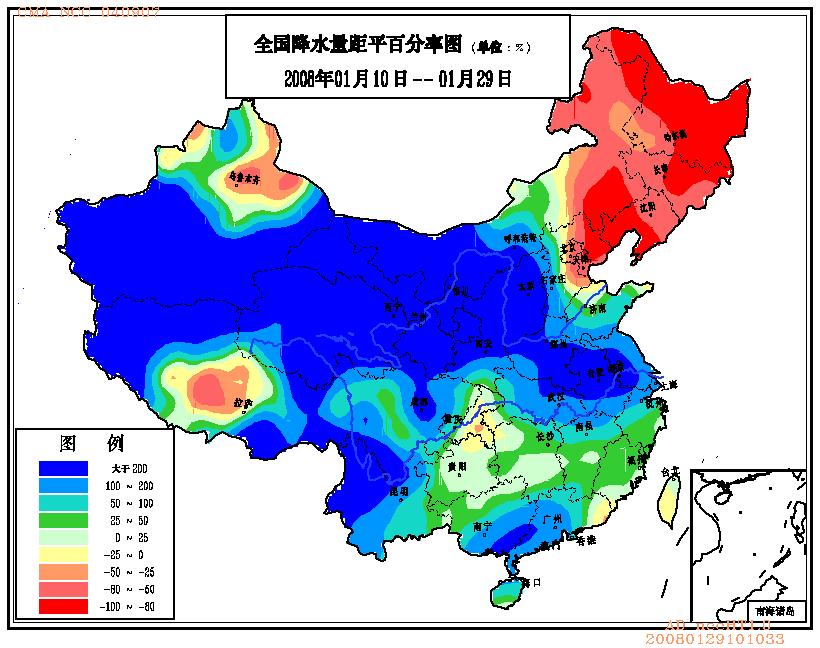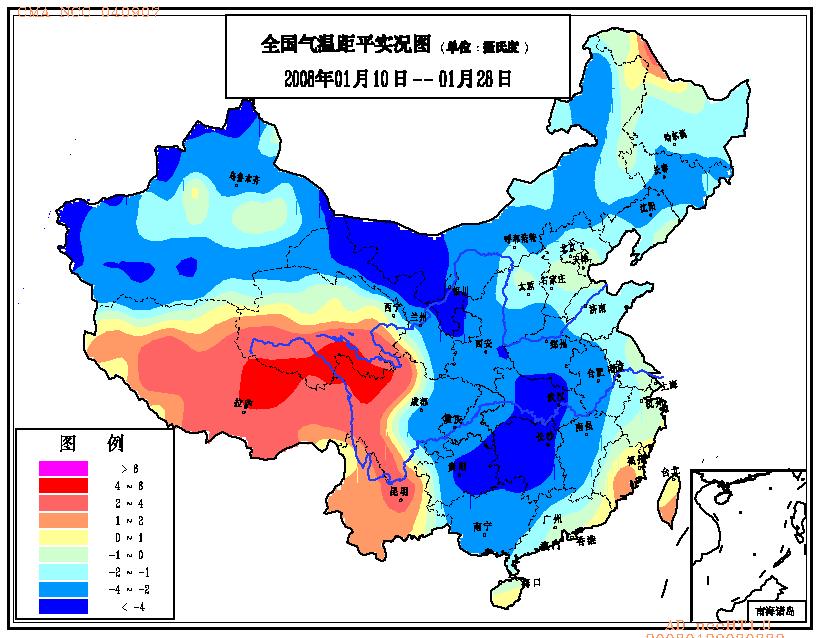Since January 10, 2008, China suffered three times of widespread ice rain, snow and freezing weather. The three processes occurred from 10-16 January, 18-22 January, and from 25 until now. Heavy snow attacked southeastern part of Henan Province, central and eastern part of Hubei Province, Anhui Province, Jiangsu Province, Hunan Province, and northern part of Jiangxi Province and Zhejiang Province, and parts of these areas had blizzard; ice rain and freezing weather appeared in most of north of Yangtze River, eastern part of Hubei Province, most areas in Guizhou Province and Southern of Anhui Province. It is generally the most disastrous ice rain, snow and freezing weather since 1951 for its widespread, intensity, long time and badly damage.
The amount of precipitation reached the maximum in most China and provinces of Henan, Sichuan, Shanxi, Gansu, Qinghai and Ningxia since 1951, and second maximum in Anhui since 1951. The mean precipitation in Northwest 5 provinces (Shanxi, Gansu, Ningxia, Qinghai, Xinjiang) recorded the maximum in history (Fig. 1). The precipitation days during the process are the most in China and especially 14 provinces Shanxi, Jiangxi, Shandong, Henan, Hubei, Hunan, Jiangsu, Anhui, Sichuan, Guizhou, Shanxi, Gansu, Qinghai, and Ningxia since 1951. At the same time, northwestern, central and eastern regions of China had experienced continuous low temperature and cold weather, the mean temperature in these areas were generally 1-4 ℃ lower than normal; over 4 ℃ lower than normal in parts of areas in Hubei, Hunan, Guizhou, Gansu, and Inner Mongolia (Fig. 2); the mean temperature in Hubei, Hunan, Chongqing, Guizhou, and Gansu were the minimum in history. In most of north of Yangtze River, Southern China and Northwest China, the detemperature range in the process reached 10-18℃; the duration of daily minimum temperature lower than 0 ℃ in Northern Hunan reached the maximum value in history.
The widespread ice rain, snow and freezing weather badly affected the traffic, power supply, agriculture and people's life in Hubei, Hunan, Anhui, Guizhou, Jiangxi and Henan. Until January 29, more than 89 million people suffered from the disaster; the direct economic losses reached 26.9 billion Yuan, and 24 people died.

Fig.1 Precipitation anomaly(%)in China from Jan 10 to Jan.29, 2008.

Fig.2 Temperature anomaly(℃)in China from Jan 10 to Jan.28, 2008.

